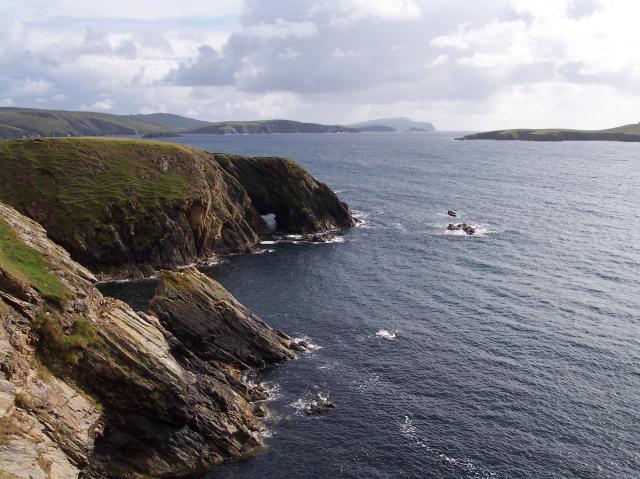East Burra on:
[Wikipedia]
[Google]
[Amazon]
 East Burra ( sco, East Burra; Old Norse: "Barrey"Anderson, Joseph (Ed.) (1893) ''Orkneyinga Saga''. Translated by Jón A. Hjaltalin & Gilbert Goudie. Edinburgh. James Thin and Mercat Press (1990 reprint). ) is one of the Scalloway Islands, a subgroup of the
East Burra ( sco, East Burra; Old Norse: "Barrey"Anderson, Joseph (Ed.) (1893) ''Orkneyinga Saga''. Translated by Jón A. Hjaltalin & Gilbert Goudie. Edinburgh. James Thin and Mercat Press (1990 reprint). ) is one of the Scalloway Islands, a subgroup of the
 East Burra ( sco, East Burra; Old Norse: "Barrey"Anderson, Joseph (Ed.) (1893) ''Orkneyinga Saga''. Translated by Jón A. Hjaltalin & Gilbert Goudie. Edinburgh. James Thin and Mercat Press (1990 reprint). ) is one of the Scalloway Islands, a subgroup of the
East Burra ( sco, East Burra; Old Norse: "Barrey"Anderson, Joseph (Ed.) (1893) ''Orkneyinga Saga''. Translated by Jón A. Hjaltalin & Gilbert Goudie. Edinburgh. James Thin and Mercat Press (1990 reprint). ) is one of the Scalloway Islands, a subgroup of the Shetland Islands
Shetland, also called the Shetland Islands and formerly Zetland, is a subarctic archipelago in Scotland lying between Orkney, the Faroe Islands and Norway. It is the northernmost region of the United Kingdom.
The islands lie about to the n ...
in Scotland
Scotland (, ) is a country that is part of the United Kingdom. Covering the northern third of the island of Great Britain, mainland Scotland has a border with England to the southeast and is otherwise surrounded by the Atlantic Ocean to ...
. It is connected by a bridge to West Burra.
With an area of it is the twelfth largest of the Shetland Islands.
East Burra has a much smaller population than West Burra and no substantial settlement; rather, there are a few hamlets and a scattering of individual croft houses. It is known for its Neolithic
The Neolithic period, or New Stone Age, is an Old World archaeological period and the final division of the Stone Age. It saw the Neolithic Revolution, a wide-ranging set of developments that appear to have arisen independently in several pa ...
remains including a burnt mound
A burnt mound is an archaeological feature consisting of a mound of shattered stones and charcoal, normally with an adjacent hearth and trough. The trough could be rock-cut, wood-lined or clay-lined to ensure it was watertight. Radiocarbon d ...
, and for sea cave
A sea cave, also known as a littoral cave, is a type of cave formed primarily by the wave action of the sea. The primary process involved is erosion. Sea caves are found throughout the world, actively forming along present coastlines and as relic ...
s. The roofless, plain, Old Haa (manor or laird's house) of Houss is a prominent feature. From Houss, it is possible to walk the two kilometres or so to the cliffs at the southern end of the island. From there, the island of South Havra, nowadays home only to sheep and seabirds, can be clearly seen.
East Burra is linked to the Shetland Mainland
The Mainland is the main island of Shetland, Scotland. The island contains Shetland's only burgh, Lerwick, and is the centre of Shetland's ferry and air connections.
Geography
It has an area of , making it the third-largest Scottish island ...
via West Burra and Trondra
Trondra ( sco, Trondra) is one of the Scalloway Islands, a subgroup of the Shetland Islands in Scotland. It shelters the harbour of Scalloway and has an area of .
History
Trondra was becoming rapidly depopulated until 1970, when road bridges wer ...
by a series of bridge
A bridge is a structure built to span a physical obstacle (such as a body of water, valley, road, or rail) without blocking the way underneath. It is constructed for the purpose of providing passage over the obstacle, which is usually someth ...
s.
Etymology
''Collins Encyclopedia of Scotland'' suggests that the name " Burra" is a corruption of "Borgarey" (island of thebroch
A broch is an Iron Age drystone hollow-walled structure found in Scotland. Brochs belong to the classification "complex Atlantic roundhouse" devised by Scottish archaeologists in the 1980s. Their origin is a matter of some controversy.
Origin ...
),Keay, J. & Keay, J. (1994) ''Collins Encyclopaedia of Scotland''. London. HarperCollins. and while this is unlikely, and no broch is extant, the place name Brough, on West Burra lends some support to this case. However, the form used in the '' Orkneyinga saga'' is "Barrey".
References
Islands of Shetland Scalloway Islands {{Shetland-geo-stub